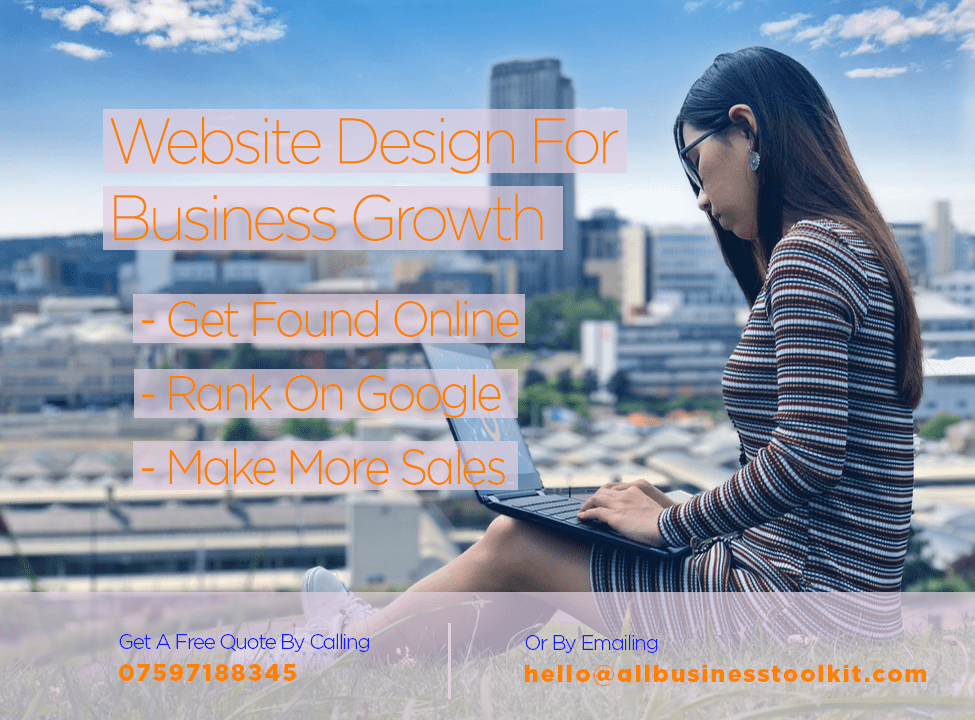Anyone that has been to business school will have been introduced to tools such as PESTOL analysis. This is a basic concept that outlines key factors that can affect your business. One of these elements is Social. The question becomes, how do you control the social element and public opinion to benefit your business?
What is Psychology of Persuasion? We are essentially tapping into a persons psyche to increase their desire to take an action. It is a direct link to increase purchasing intent. The psychology of persuasion is using triggers to influence customer behaviour and lead people toward sales in your business. It can also include applying the knowledge obtained from neuroscience and cognitive science research to engage peoples impulses.
In this article, we discuss some tactics you can easily implement into your business and you’ll see immediate results!
1. What is Psychological Persuasion?
For a business to be successful the obvious is that you need a good product and you treat your customers well! However, there’s a few psychological tricks corporate marketers use to influence customer behaviour. The science of persuasion is the phenomena we experience in the world where influence comes from.
There are a variety of techniques businesses can use to leverage them towards growth. A marketing manager will encourage this in all aspects in their customers journey, whereby, you will expose a customer to each one of these at some point within their purchasing cycle.
To Note: Yes, this is where ethics becomes a-bit of a problem in some instances so be mindful.
2. Why Is Psychological Persuasion Important?
If you can get inside your customers mind you can influence a persons opinion. If you can influence a persons opinion you can then control their behaviour and ultimately where they spend their money. There are many persuasive psychological tactics we have observed over the centuries that if implemented into your business can help it grow!
Luckily by using these tactics we can get people in their irrational state. Making them impulsive and catch them when their thinking spontaneously.
The Natural Process To Gain Trust?
By keeping promises builds trust. As a business you have greatest impact if people trust you. Businesses people trust, have the ability to exert influence over how people behave. The irony is that you will not buy from a brand until you believe in it. People are very skeptical and will not trust something until they have proven themselves. They will contentiously and rationally evaluate trust making it harder to influence people that have never been satisfied with your business in the past.
As marketers we approach this in a different way. Before you place your trust in someone, you must first get to know them and then like them. Luckily, when getting to know something, and liking something is a more emotional process. We can lead people to trust us through the “Know, Like Trust Principle“.
The secret lies within the subconscious of people’s minds. The subconscious is what controls our emotions. This is where people are vulnerable because they are less rational and more emotional. This means we can target peoples feelings and influence the way people feel. Whereby, brand personality and product characteristics change patterns in the brain chemistry and influence our behaviour on a subconscious level. By observing and understanding people, by being attuned to their subjunctives, and by showing them sensitivity; we can further enhance the changes taking place.
Influence Customer Behaviour Without Trust
Generally people want to trust. So they do put them selves out their if it seems worth it. There are many way to control people behaviour when people do not trust you, but are open to consideration. Being able to control the way the way people act makes your business massively influential against competitors.
We can do in all kinds of ways:
- The most obvious is making people visit your store
- Less obvious ways are encouraging people to watch videos, opening emails, tuning in to listen on the radio, watching relevant information on the TV, and attending events.
Even though they are not directly purchasing it is a good starting point to gain trust. We control the way people act by controlling the way they feel. So our aim is to provide good collateral that makes our audience feel something. However, marketers must also keep in mind that all people approach the world through their own subjective frameworks; and that understanding those frameworks will lead to greater success.
3. What are the Psychological Tactics?
For this you first need access to a media outlet whereby you can form a narrative, build a social construction and thus a opinion is formed. In addition, Forbes’ study points out that 95% of consumers’ decisions are made in a split second in their subconscious. It is interesting to point out, that the human subconscious processes 40 million bits of information per second; whilst the conscious can only process 60 bits per second. Due to the conscious only able to process 60 bits per second, it will only access what it regards as important enough information to make the buying decision.
The science of psychological persuasion takes advantage of such things in the context of benefiting purchasing behaviour. Remarkably, not all purchasing decisions are made in the rational mind. We can target the irrational state of mind through simple messaging and communication. It can include routes such as advertising and even visiting the website.
There are many methods that we talk about:
- Mere exposure
- Classic conditioning
- Brand association
- Bandwagon effect
- Price & costs
- Reciprocity
- Scarcity
- Authority
- Consistency
- Liking
- Consensus
The main aim that that the message and style of communication appeals to people’s senses to evoke a gut reaction and desire for belonging. However, when we do this, we elicit changes in people’s perceptions and thereby how they think about our product. By having the ability to change the way people think, as marketers, we thereby have the power to influence people’s purchasing behaviour.
Some of these techniques that I’m about to discuss are used all the time by corporations, they are very subtle which is why people won’t really notice unless your paying attention. Below we discuss each of these in turn…
5. Mere Exposure
Mere exposure is seen in advertisements and usually makes you scratch your head and wonder why an organisation would spend thousands of dollars on that type of advert. It’s a psychological phenomena in which people develop a predilection for things just because they’ve encountered them before. Because of familiarity, the mere exposure effect results in a growing preference or affection for something or someone. As a result, in social psychology, this effect is commonly referred to as the familiarity principle.
A simple exposure effect example is when you first hear a song on the radio and dislike it. However, after hearing it several times, you begin to enjoy it. Despite your initial distaste, you grow to believe you like the song as you become more aware of the tune, lyrics, and other aspects of it. After some time, you may even prefer the music to others you enjoyed at first. This effect can affect how you feel about people, things, television shows, political polices being pushes on the radio, songs, and pretty much everything else you come across on a regular basis. The simple exposure effect, for example, refers to the reality that people begin to appreciate something more for no other reason than their familiarity with it.
Mere Exposure in Advertising
Advertising is one of the most powerful applications of the mere exposure effect. Buyers begin to trust brands when they are bombarded with adverts that use the company’s name. This happens despite the fact that they have learnt nothing new or significant about them, but have merely grown accustomed to hearing their name frequently, which instills in them the belief that they must be decent and trustworthy.
The commercial that ran the most frequently elicited the most positive replies, demonstrating the mere exposure effect. However, not all studies support these conclusions. Some experts feel that too much advertisement exposure leads to buyer ambivalence. Most academics believe that when a product or brand is new, exposure in advertising is most beneficial, but after they are moderately familiar with it, increasing exposure does not always result in higher favor-ability. However, this can still testify to the efficacy of the mere exposure effect, as reaching a degree of favor-ability builds consumer trust. When consumers choose things in the future, the simple concept of a brand they believe they enjoy (because they are aware of it) can be powerful enough.
Mere Exposure in Marketing
The mere exposure effect has a significant influence on decision-making. People make a variety of decisions because they are more familiar with one of the options, despite evidence indicating another option would be superior.
While the exposure effect is powerful in and of itself, it can be even more so when used subliminally. This suggests that someone who is familiar with something can still be more favorable to it, even though they have not been exposed to it consciously.
Do you want to take advantage of the mere exposure effect? It’s necessary to flutter around from time to time if you want to be a butterfly in your social circles! It’s amazing how much just “being around” can do for you. It’s possible that others who are in your presence will like you more.
Example
By exposing a person’s mind to the desired brand association (mainly through advertising), the consumer starts to feel like they know it. If the message is right, then will like it. This is defined as a terms called cognitive recognition and is used in advertisements all the time.
This is built directly into the know, like and trust factor and also known as brand recognition, which is primarily use to build and maintain a solid brand image.
A study done by the university of Cincinnati ran an experiment. They gave two groups of people with Parkinson’s disease, the same drug but made it clear they was from different brands. The people that was exposed to the branded drug had a 28% greater increase in motor skills, than after taking the drug.
This means the expensive brand has a placebo effect that actually increased performance. When in reality both groups were given the same drug. The expectations were higher therefor it worked better. So, spending more will effectively make you feel better.
6. Classic Conditioning
The idea behind classic conditioning was observed by a Russian physiologist Ivan Pavlov. Pavlov discovered this idea by noticing his dogs salivated whenever it was time for him to feed them. To prove his hypothesis he started to ring a bell whenever it was time to feed his dogs. What he noticed was whenever he started to ring the bell the dogs began to learn and started salivating whenever the bell was being ringed. This was because the dog was associating the sound of the bell with food. In a sense the dog was trained to associate the bell with food and thus created the expectation of feeding time.
This same effect works with humans. Classic conditioning creates positive & negative reinforcement and is leveraged by creating expectations. Brand marketing is specifically coordinated to have certain feeling, images and reactions associated with their products. If a brand shows two images in an advertisement the consumer will subconsciously relate those images to the product. This in turn has created an association to the viewer.
Car brands do this all the time. They will rarely have an advertisement about the actual product features and price. Rather, they will demonstrate someone driving the car. For example, if it is a racer car, they will drive it pulling up to a red-carpet event, or if it is a land rover, you will see an adventurous couple with kayaks and bikes on the tow being driven on rough terrain.
This is all part of building a brand image by association. This results in the consumer not looking to purchase the actual vehicle, but rather want t the life style. In most cases you are buying into the image of being adventurous or going to luxury black tie events.
7. Brand Association
Brand marketing is the process of building a brand image that is influential in the eyes of the consumer. In order to do this people must be able to identify themselves with your brand. Brand association is a good trick to achieve this as by simply representing your brand next to other interests that coincide with your audience makes your brand appear more interesting and appealing.
This can include everything from, the characteristics and image, experience someone has using it, or hearing about other business related activites such as parterships etc…
It is true that colors, images and associations greatly influence our purchasing behaviour because they inspire us and bring hope to our lives. It is also, important to note that if a product has a brilliant brand but a bad experience with the product then the brand will be associated with that bad experience. In turn, the brand will work against itself.
Read more about brand association here…
8. Bandwagon Effect
The bandwagon effect refers to people’s proclivity to embrace certain habits, styles, or attitudes merely because others are doing so. The bandwagon effect is one of a number of cognitive biases or mistakes of reasoning that influence people’s judgments and decisions. Cognitive biases are intended to help people think and reason more rapidly, yet they frequently lead to errors and miscalculations.
This occurs because group pressure and norms have a significant impact on individuals. When it appears that the majority of the group is doing something, it gets progressively difficult to refrain from doing it.
This urge to fit in can influence a wide range of behaviours, from what people wear to who they vote for in elections.
The consensus is that it wouldn’t be such a huge brand if it didn’t work well. Means that is the collective choice which is made.
Groupthink
The bandwagon effect can be thought of as a form of groupthink. The more people who accept a certain craze or trend, the more probable it is that others will “get on board.” When it appears that everyone is doing something, there is a lot of pressure to conform, which is why bandwagon behaviours are so easy to establish.
- A Desire to Be Right – People strive to be correct. They want to be a part of the team that succeeds. People conform in part because they seek knowledge about what is right or acceptable from others in their social group. When it appears that everyone else is doing something, people are led to believe that it is the right thing to do.
- A Need to Be Included – The fear of being left out contributes to the bandwagon effect. Because no one wants to be the odd man out, following what the rest of the group is doing is a good approach to secure social acceptance and inclusion.
To earn acceptance and approval from the group, people are compelled to embrace the majority’s norms and attitudes. While the bandwagon effect can be quite powerful and contribute to the rapid creation of trends, these behaviours are also rather vulnerable. People are quick to hop on the bandwagon, but they are also quick to leap off. This could explain why fashion trends are so short-lived.
Examples
Everyone feels most at ease in a group setting. If you’re waiting in a bank line, a gas station line, or a motorway/highway lane. Surprisingly, people will instinctively choose the longer line because they believe there is something wrong with the shorter line, even if the queue is shorter for no other reason.
They believe that one line is superior to the other in terms of accuracy. Even if it isn’t true, the psychological effect of people being in groups creates that perception. It’s simply a more convenient and comfortable decision to do what everyone else is doing.
9. The Psychology of Price & Costs
If an organisation can afford to pay big money for advertisements or make the sense that, everyone is buying it then people will buy it because everyone is most comfortable in groups. People can also be anxious by choosing less expensive drugs as there is a fear they won’t work as well.
As a result, powerful brands are able to charge higher prices. The comparison can be made with ibuprofen. The Advil product decomposes in the same way as the lower brands. It has to be; otherwise, it isn’t legal to be called Ibuprofen. Advil has been able to brand this product in such a way that customers are willing to pay extra for the same medication. It’s simply easier to go with what everyone else is doing.
This also works in a logistical sense. For example, if your business appears in front of an expensive medium such as TV advertisements, or you business rents a booth at a show. People know the cost is high to be there, which just adds to the credibility because if an organisation can afford to spend that type of money means everyone must be buying it, and its must work well.
10. Reciprocity
People are obligated to give back to others the form of gift, behaviour, and service that they first received. It can be as simple as if a stranger asks how you are, you feel obligated to return the question. Alternatively, if a friend asks you to a party will be obligated to ask them to a future party as well. If a colleague does you a favor at work, you will feel obliged to return a favor as you feel you owe that person.
In the whole context of things, people are more likely to say yes to those people they owe.
Supermarkets use this technique all the time with their free samples. This is proven to increase sales by 45% once free samples are given. But, one of the most significant demonstrations of reciprocation can be seen from a series of studies that were conducted in restaurants.
In the study, a show that tips was increased by 3% if the waiter left a gift with the bill (most likely mints). Interestingly, if two mints were left then tips quadruple to 14% increase. Most interestingly, if the waiter leaves one mint, and returns to the table saying, “For you nice people, I’ll leave you an extra mint” and leaves them with two mints. Then tips increase to 23%. Demonstrating that the influence was not by what was given, but how it was given.
How do we apply reciprocity to our strategy?
So, in your marketing strategy, it will always be effective to offer something free as a front end product. However, you need to deliver the front end product in such a way that makes people obligated to purchase your back end product. The front product can be something small like a mint. On the other hand, even free information that is helpful to the customer.
We do not aim to make a profit of the front-end product.
But, we do aim for it to lead customers to our back-end product. The back-end product is our main product that makes the business sustainable. Overall, the key to reciprocation is the first to give and have it personalized and unexpected. If this is done it the right way then by theory your customers will be obligated to purchase your back-end product.
11. Scarcity
We experience every day that people want more of those things can have less of. A good example of this phenomenon can be seen from British Airways. In 2003, they announced they would no longer be running London to New York flight that runs twice a day as it had become uneconomical running twice daily.
After these announcements of only running the twice-daily flight to once a day, the sales the next day sharply increased. There were no changes to the airfare price, the service had not changed and nothing had changed about the Concord its self, it did not fly any faster or perform any differently.
It had just become a scarce resource. As a result, people wanted it more. The science is clear. It is not enough to tell people about the benefits they will gain from choosing your service (the unique value proposition) but also what they plan to lose.
This is a very easy thing to apply to any business. It is as simple as making premium product and announcing that there is limited stock.
12. Authority
This is the idea that people follow credible and knowledgeable experts. Studies show that physiotherapists are able to influence more of their patents to recommended fitness programs when they display their medical degree on the walls of their consulting rooms.
People are more compliant to give their spare change to a parking meter is they are wearing a uniform. The science demonstrates that you need to demonstrate you are a credible source before you make your influence attempt.
However, it is not recommended you tell your prospects how brilliant you are because this type of authority is meaningless. This is because it is not a credible source coming from you. The science also shows that a credible source can include anyone else that introduces you, even if they are connected and could prosper from the introduction themselves.
How To Apply Authority To Your Business Strategy?
A group of real estate agent was able to increase the number of contracts they wrote and property appraisals by having reception staff that took customer inquiries to first mention their colleague’s credentials and expertise before delegating the phone call.
A typical example would look like “Lettings? If you want to know about your letting I can put you through to Rachael, she has over 20 years’ experience letting properties in this area”.
The expert introduction technique led to a 20% increase in a number of appointments and a 15% increase in signed contracts.
Another method business use on a typical basis is getting testimonials or feedback if online and word-of-mouth, which is arguably the most powerful growth strategy any business can implement.
13. Consistency
People have a tendency to want to appear consistent in front of other people. People are obliged to be consistent with things they have previously said or done. By this I mean people like to keep their word. Marketers can use this in an active way of persuading others if they get them to agree to something beforehand.
It is activated by small commitments that can be made prior to a much bigger commitment. A research study shows that people would be unwilling to put up an unsightly wooden board on their garden that supports a drive safe campaign. However, in a neighbourhood close by a 400% increase in houses were willing to put up this same sign.
Why was this?
Well, a few weeks before this neighbourhood agreed to post a small card on their living room window that signaled support for the same campaign. This card was the initial commitments to a much bigger objective.
Therefore, to assure your influence is effective. You need to get a small commitment either voluntary active and public commitments in writing.
Another study demonstrates that reduced missed appointments in health centres by 18% because patients that were asked to write down their appointment details on the future appointment card rather than the staff.
14. Liking
Persuasion science justifies three important factors too liking people. To harness this powerful principle of liking make sure to look for areas of similarity and any forms of compliments you can give before you get down to business.
We like people that are:
- Similar to us
- Give us compliments
- People who cooperate with us towards mutual goals
In a study conducted on MBA students, they were on a task to negotiate with clients. On this task the MBA students were told – Time is money. Get straight down to business. This group of people came to a 55% agreement within their negotiations.
During the same study, a second group was told to share personal information before the negotiations took place. This group was able to come towards a 90% agreement.
15. Consensus
When people are uncertain it is a common fact people look towards the actions and behaviours of others to determine their own actions and behaviours. This is actually a technique politicians use all the time to gain influence over their followers. It is also known for hotels to pin up notes in a bathroom that state for towels to be reused.
A recent study compared two approaches when it comes to influencing this type of behaviour.
- The first study examined the environmental benefits for towel reuse. This resulted in 35% compliance. However, can you guess what happens when taking advantage of the consensus principle?
- In the same study, when the message read, “75% of our guests reuse their towels – please do so as well.”
- This had a 26% rise in the number of people that reuse their towels.
- In addition, the same study also outlines re-framing the statement can also have a drastic effect. When the message was read, “75% of people that stayed in this room reuse their towel.”
- Resulted in a 33% rise in towel reuse.
The learning here is that rather trying to single-highhandedly persuade others. You can just point to what other people are already doing. In terms of marketing, this justifies the reasoning behind having testimonials in your product pitch or even displaying your product and brand along groups of people.
Conclusion
We induce changes in people’s perceptions and hence how they think about our business and brand by utilizing the science of psychology. As marketers, we have the authority to affect people’s purchasing behaviour because we have the potential to modify how they think.
Marketing has the ability to transform a brand into the industry’s leading brand. This includes making a subconscious connection with someone in order to generate a positive emotional response. It’s subtle, but if done well, it’s incredibly powerful.
As humans we are very impulsive under the right conditions. The mind works in very strange ways, and over the years we have discovered that there’re certain situations where people would act outside of their normal character. We would could be irrational and spontaneous. The underlying psychological aspects that can potentially influence people’s purchasing behaviours by exploiting their impulses.





